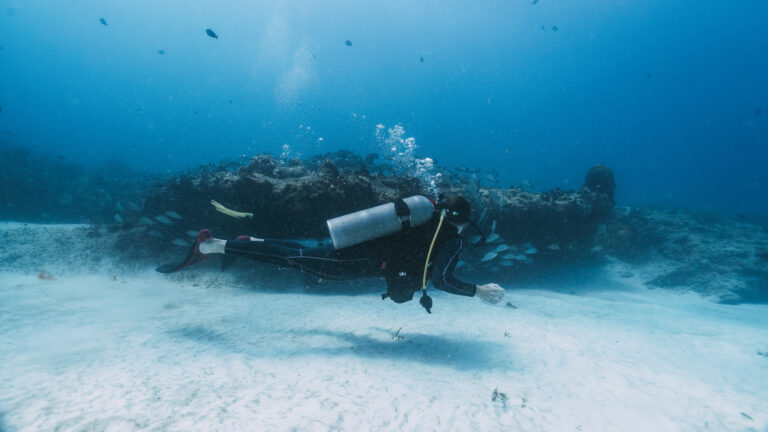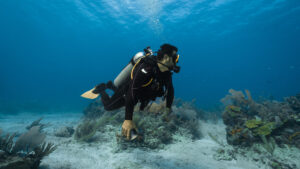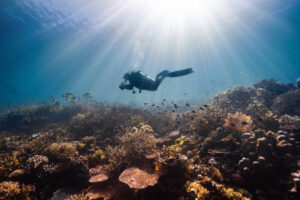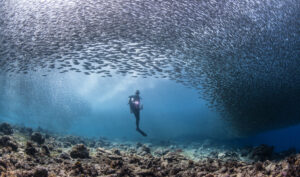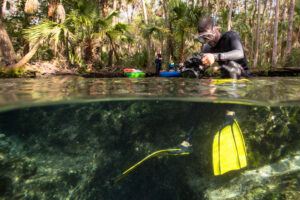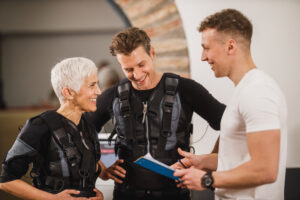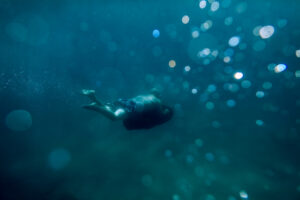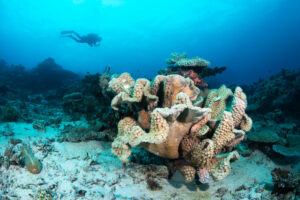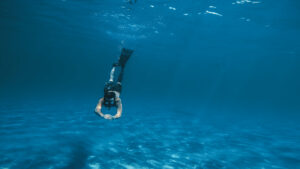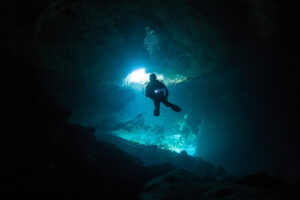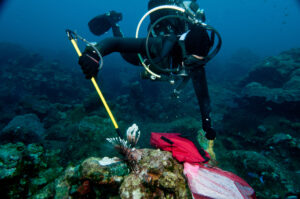What is a Manifold?
A manifold in scuba diving is an essential component that plays a crucial role in connecting multiple tanks to provide divers with a continuous and reliable air supply. This device allows for the seamless integration of two or more tanks, ensuring that divers can manage their air reserves efficiently and safely. Manifolds are particularly important in technical and deep diving, where extended bottom times and redundancy in air supply are critical. By linking tanks together, a manifold provides divers with the flexibility to access a larger volume of air, enhancing their underwater experience and safety.
Historical Development of the Manifold
The development of manifolds in scuba diving can be traced back to the early days of underwater exploration when divers sought to extend their bottom time and improve safety. In the 1950s and 1960s, as scuba diving became more popular, divers began experimenting with different methods to increase their air supply. The initial solutions were rudimentary, often involving makeshift connections between tanks. These early attempts laid the groundwork for the development of more sophisticated manifold systems.
One of the significant milestones in the evolution of manifolds was the introduction of the double-hose regulator, which allowed divers to connect two tanks simultaneously. This innovation, combined with the growing understanding of the benefits of redundant air supplies, led to the creation of the first dedicated manifold systems. These early designs were simple but effective, consisting of basic valves and connections that allowed divers to switch between tanks manually.
As the sport of scuba diving progressed, so did the technology behind manifolds. By the 1970s, more advanced manifold designs emerged, incorporating isolation valves that enabled divers to control the flow of air from each tank independently. This advancement was particularly important for technical diving, where the ability to isolate a malfunctioning tank could mean the difference between life and death. Over the years, continued research and development have led to the sophisticated manifold systems used by divers today, which offer enhanced reliability, ease of use, and improved safety features.
Technical Description of a Manifold
A manifold is a critical component in scuba diving that connects multiple tanks, allowing divers to access a larger air supply and manage their breathing gas more effectively. At its core, a manifold consists of a series of valves and connections that link two or more tanks together. These components work in unison to ensure that air flows smoothly from the tanks to the diver’s regulator.
There are several types of manifolds used in scuba diving, each designed to meet specific needs and diving conditions. The most common types include isolated and non-isolated manifolds. An isolated manifold features individual valves for each tank, allowing divers to shut off the air supply from one tank while continuing to breathe from the other. This design provides an added layer of safety, as it enables divers to isolate a malfunctioning tank without losing access to their entire air supply.
Non-isolated manifolds, on the other hand, have a single valve that controls the flow of air from both tanks simultaneously. While this design is simpler and often more compact, it does not offer the same level of redundancy as an isolated manifold. Divers must carefully consider their specific diving needs and conditions when choosing between isolated and non-isolated manifolds.
The construction of manifolds typically involves the use of durable materials such as stainless steel or high-grade aluminum, which can withstand the harsh conditions of underwater environments. These materials are resistant to corrosion and provide the necessary strength to handle the high pressures involved in scuba diving. Additionally, modern manifolds are designed with precision engineering to ensure reliable performance and ease of use.
Functionality and Operation
Understanding how manifolds operate within a twin tank setup is essential for appreciating their role in scuba diving. When two tanks are connected by a manifold, the air supply from both tanks is combined, allowing the diver to access a larger volume of breathing gas. This setup is particularly beneficial for technical divers who require extended bottom times and for recreational divers who want an added layer of safety through redundancy.
The primary advantage of using a manifold is the ability to manage air supply more effectively. In an isolated manifold system, each tank can be independently controlled through individual valves. This feature is crucial in emergency situations, where a diver may need to shut off one tank due to a malfunction while still having access to the other tank’s air supply. For example, if a diver experiences a free-flowing regulator or a leak in one tank, they can isolate that tank and continue breathing from the other, thereby ensuring their safety.
Safety features are a key aspect of modern manifold systems. Many manifolds are equipped with burst discs, which act as pressure relief devices. In the event of an overpressure situation, the burst disc will rupture, allowing excess pressure to escape and preventing potential tank explosions. Additionally, some manifolds feature integrated pressure gauges, providing divers with real-time information about their air supply levels.
Using a manifold also enhances a diver’s flexibility in managing their air consumption. By balancing the use of air between two tanks, divers can optimize their gas consumption rates and extend their dive times. This capability is particularly important for deep and technical dives, where efficient air management can significantly impact the overall success and safety of the dive.
Types of Manifolds and Their Applications
Manifolds come in various designs, each tailored to specific diving applications and conditions. Understanding the differences between these types is essential for divers to select the appropriate equipment for their needs.
One common type of manifold is the Y-valve manifold, which features a Y-shaped configuration with a single inlet and two outlets. This design allows divers to connect two regulators to a single tank, providing redundancy in the event of a regulator failure. Y-valve manifolds are often used in recreational diving, where simplicity and ease of use are paramount.
Another popular design is the H-valve manifold, which resembles the letter H in its configuration. This type of manifold connects two tanks side by side, with a central valve controlling the flow of air. H-valve manifolds are favored by technical divers who require the ability to isolate tanks independently. The H-valve design offers a high level of redundancy, making it suitable for demanding diving conditions such as deep or cave diving.
Each type of manifold has specific use cases that align with different diving scenarios. For instance, isolated manifolds are ideal for technical divers who prioritize safety and redundancy. In contrast, non-isolated manifolds are more suitable for recreational divers who seek a straightforward and compact setup. The choice of manifold can significantly impact a diver’s overall safety, flexibility, and comfort underwater.
The impact of manifold choice on diving safety cannot be overstated. Divers must carefully assess their diving objectives, environmental conditions, and personal preferences when selecting a manifold system. Proper training and familiarity with the chosen manifold are also essential to ensure safe and effective use. Divers should practice switching between tanks, isolating malfunctioning tanks, and managing their air supply under various conditions to build confidence and proficiency with their manifold system.
Maintenance and Troubleshooting
Regular maintenance of manifolds is critical to ensuring their reliable performance and longevity. Divers should adhere to a routine maintenance schedule, which includes visual inspections, cleaning, and testing of all components. Visual inspections involve checking for signs of wear, corrosion, and damage. Any issues detected during these inspections should be addressed promptly to prevent potential failures during a dive.
Cleaning is another essential aspect of manifold maintenance. Divers should disassemble the manifold and clean each component thoroughly, removing any debris, salt, or contaminants that may have accumulated. Special attention should be given to the valves and connections, as these areas are prone to buildup that can affect the manifold’s functionality. Using appropriate cleaning agents and techniques ensures that the manifold remains in optimal condition.
Troubleshooting common issues with manifolds is a skill that all divers should develop. One frequent problem is air leaks, which can occur at the connections or valves. Identifying the source of the leak and addressing it promptly is crucial to maintaining a safe air supply. In some cases, tightening the connections or replacing O-rings may resolve the issue. However, if the problem persists, professional servicing may be required.
Valve failures are another concern that divers may encounter. Regular testing of the valves ensures that they operate smoothly and can be shut off or opened as needed. If a valve becomes difficult to operate or fails to seal properly, it should be serviced or replaced immediately. Professional servicing is recommended for more complex issues or when routine maintenance does not resolve the problem. Qualified technicians can perform thorough inspections, repairs, and pressure testing to ensure that the manifold operates reliably.
Future Trends in Manifold Technology
The future of manifold technology in scuba diving is marked by ongoing innovations aimed at enhancing safety, usability, and environmental sustainability. One notable trend is the development of lighter and more durable materials for manifold construction. Advances in metallurgy and materials science have led to the creation of high-strength alloys and composites that offer superior resistance to corrosion and wear while reducing the overall weight of the manifold system.
Digital technology is also making its way into manifold systems. The integration of sensors and electronic monitoring devices allows divers to receive real-time data on their air supply, tank pressures, and valve statuses. These digital systems can provide alerts and warnings, enhancing the diver’s situational awareness and enabling proactive management of potential issues. The incorporation of Bluetooth connectivity and mobile apps further extends the capabilities of digital manifolds, allowing divers to access and analyze dive data on their smartphones or tablets.
Environmental considerations are increasingly influencing the design and production of manifold systems. Manufacturers are exploring eco-friendly materials and production processes that minimize environmental impact. Additionally, efforts are being made to improve the recyclability of manifold components, ensuring that end-of-life equipment can be disposed of responsibly. These initiatives reflect the diving community’s growing commitment to sustainability and environmental stewardship.
The future of manifold technology holds the promise of greater safety, convenience, and sustainability for divers. As innovations continue to emerge, divers can look forward to enhanced manifold systems that offer improved performance and reliability in diverse diving conditions.
Key Takeaways
Manifolds are vital components in scuba diving, connecting multiple tanks to provide a continuous and reliable air supply. Their development has evolved significantly, offering divers advanced features for safety and flexibility. Understanding the technical aspects, types, and maintenance of manifolds is crucial for their effective use. Future trends in manifold technology promise further enhancements in safety, usability, and environmental sustainability, ensuring that divers can continue to enjoy and explore the underwater world with confidence.

